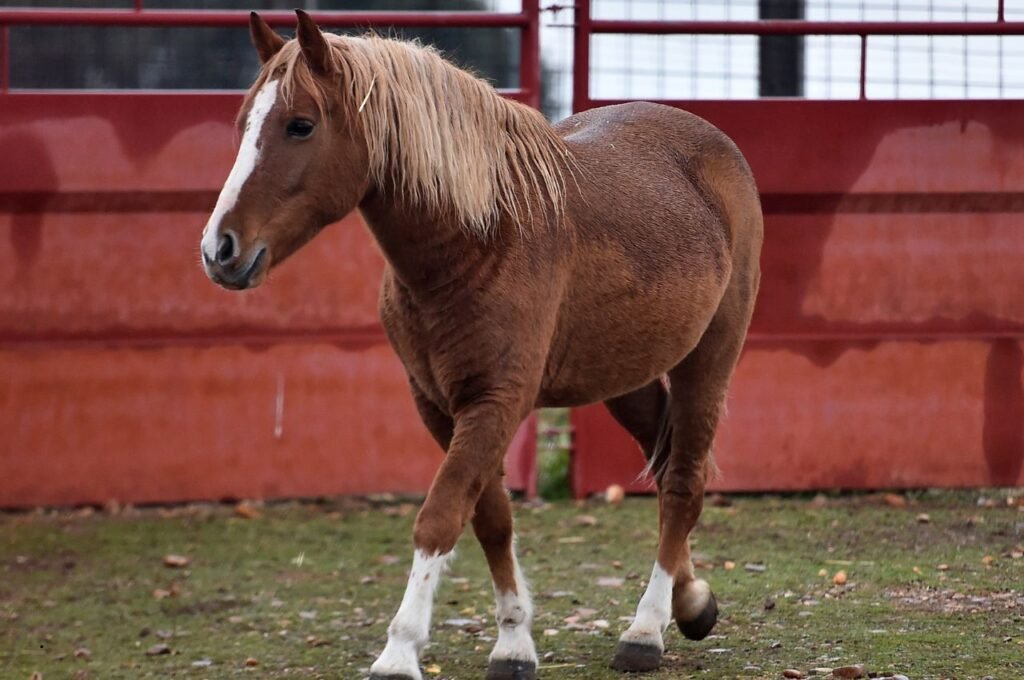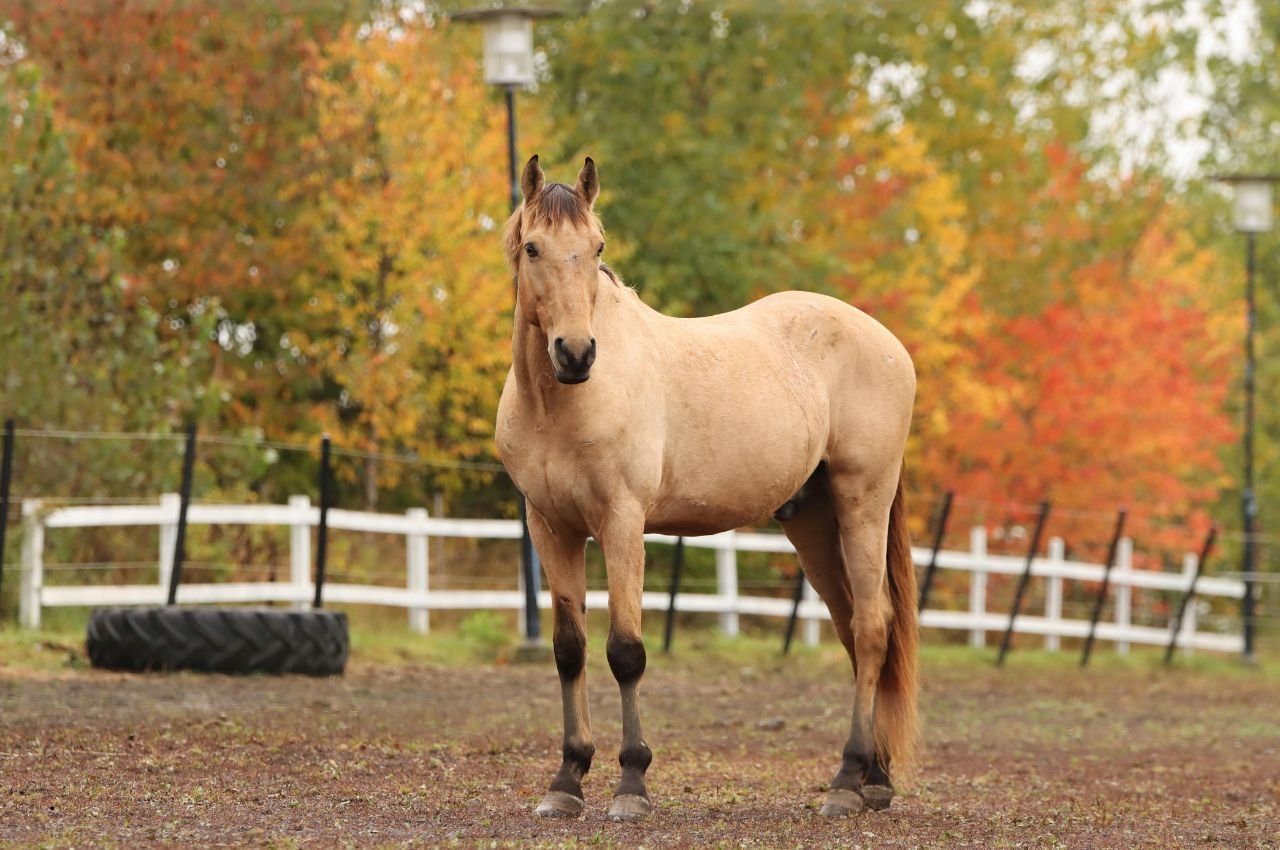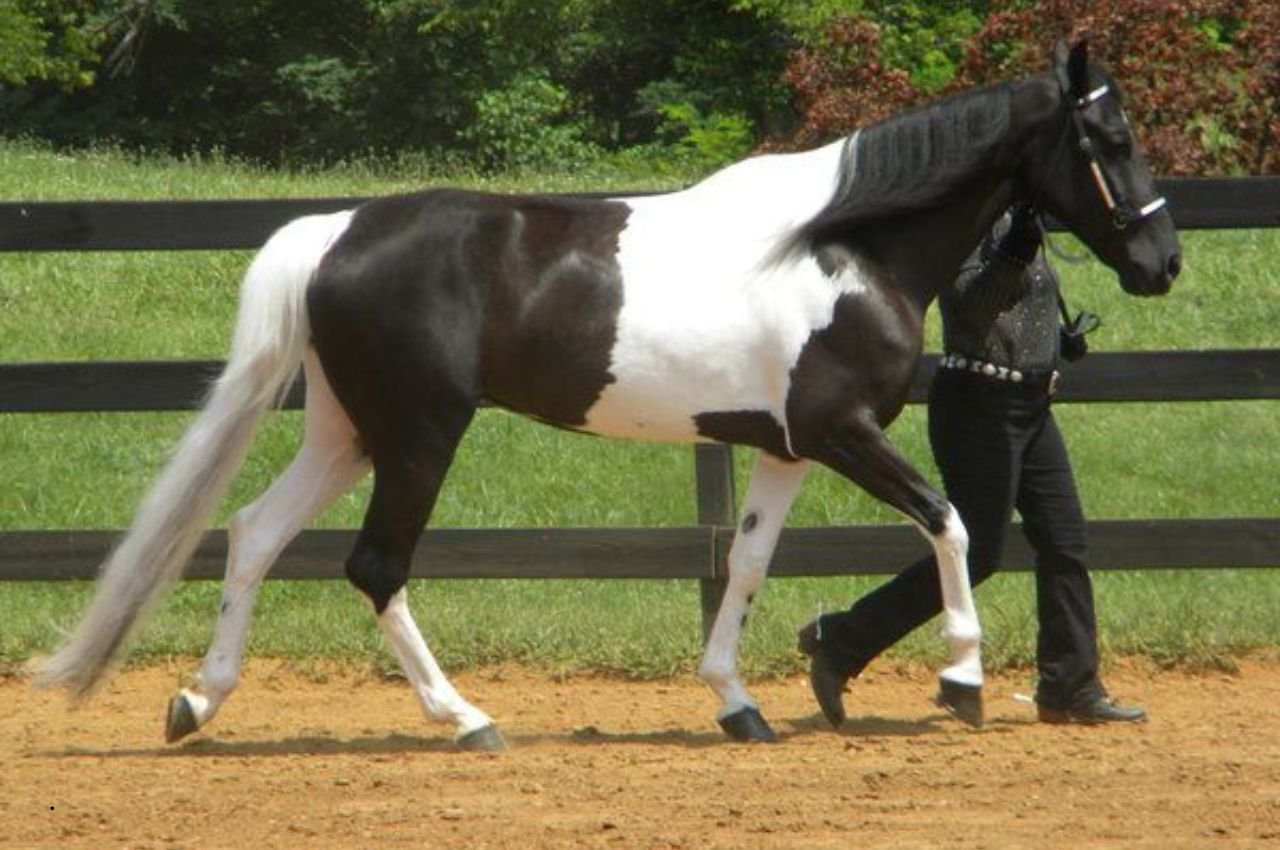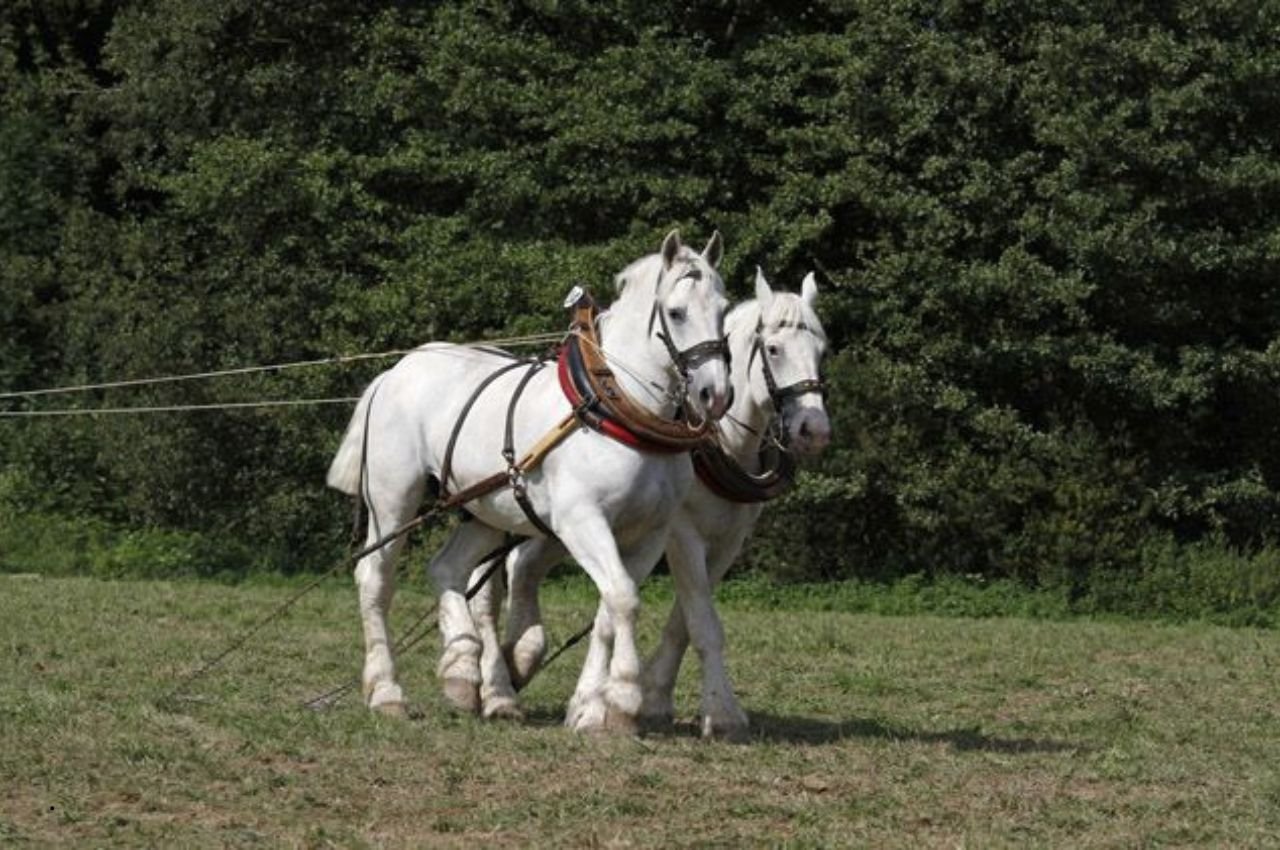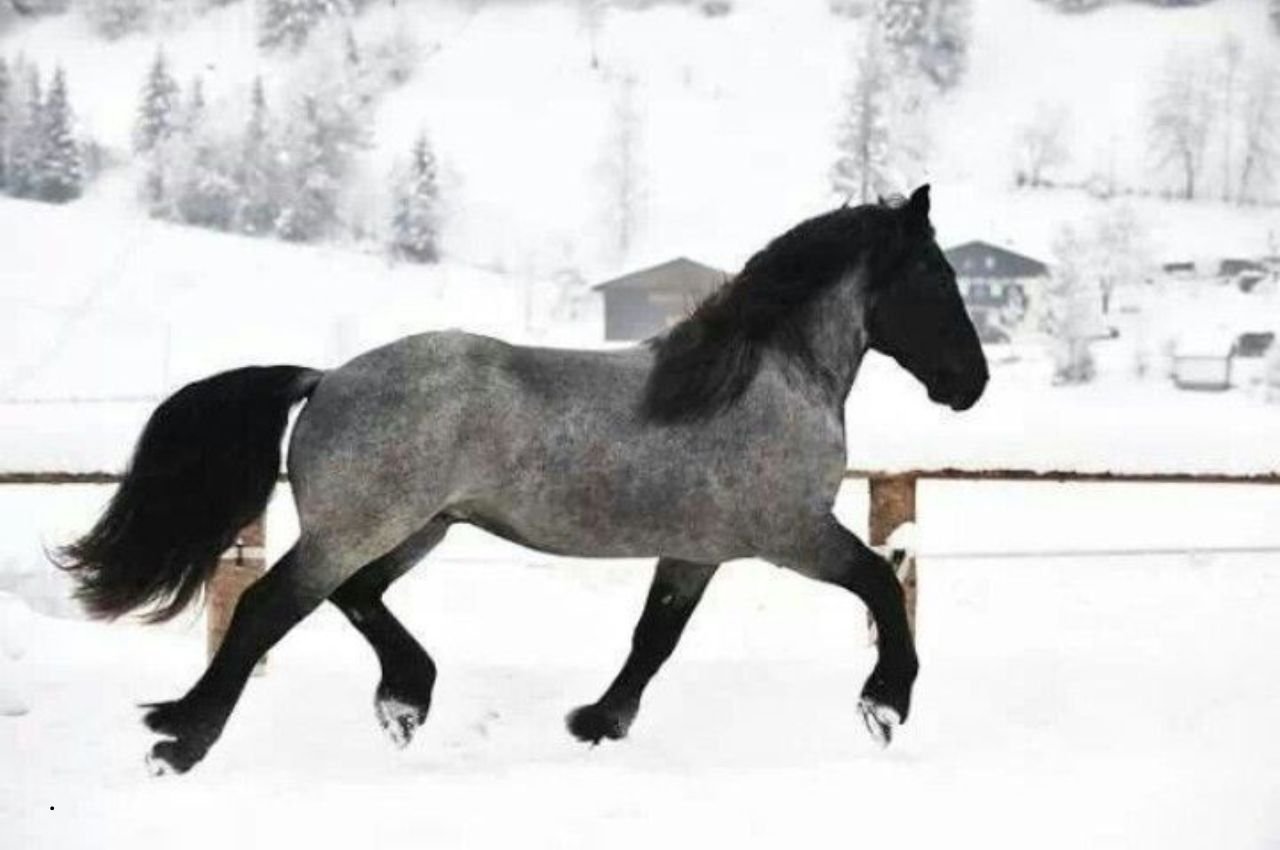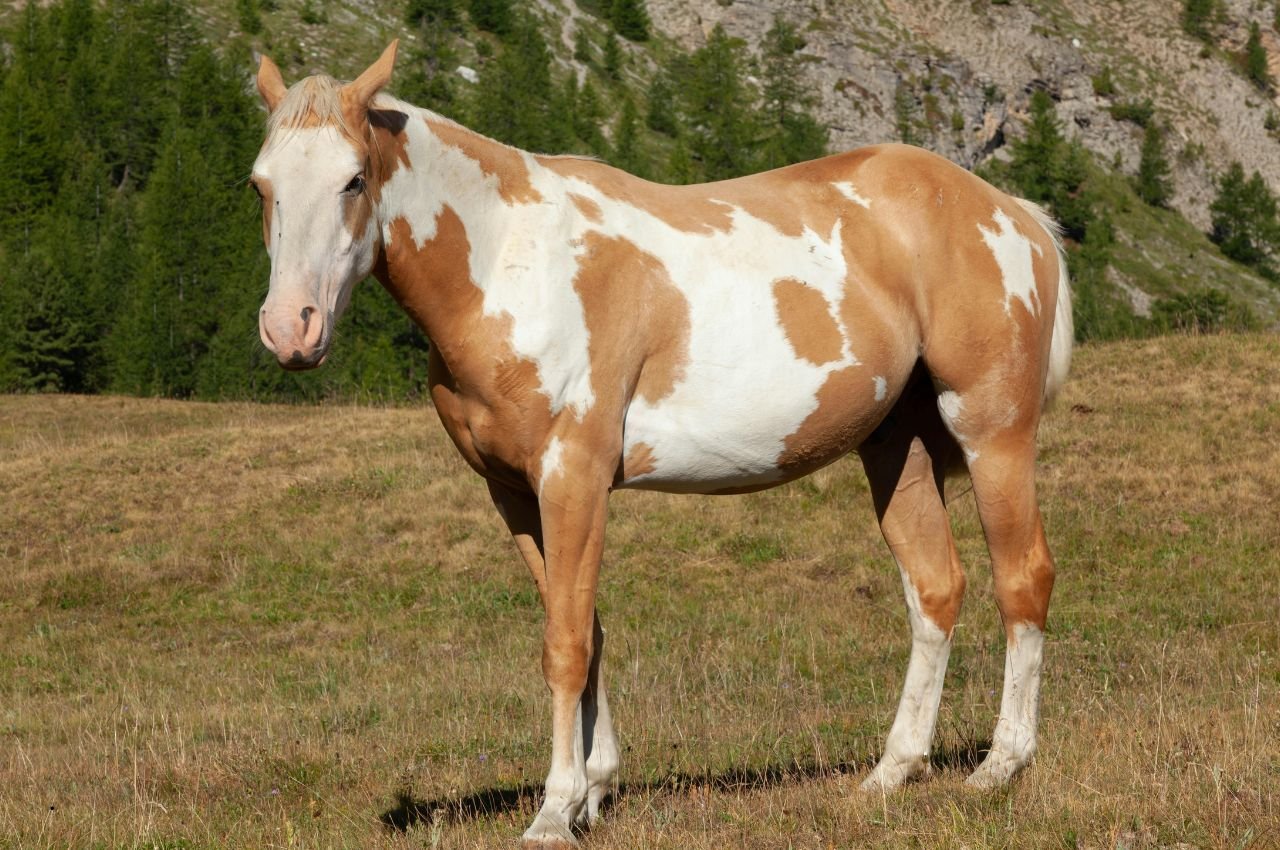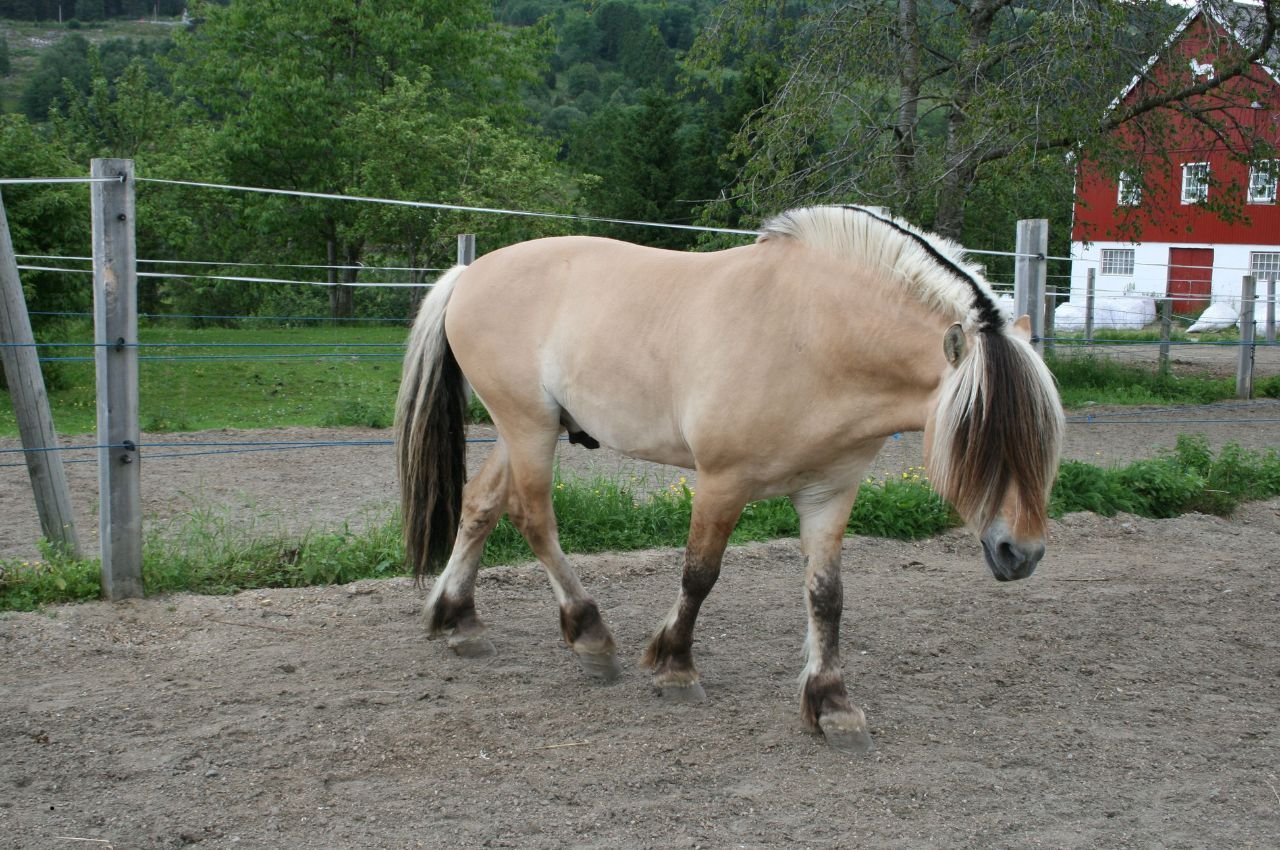The Percheron horse is one of the most recognizable draft breeds in the world, known for its impressive size, strength, and gentle temperament. Originating from the Perche region of France, the Percheron has become a popular choice for a variety of purposes, from heavy farm work to modern-day recreational riding and driving. This guide will explore the breed’s traits, uses, and provide valuable tips for their care, including health and feeding advice.
Percheron Horse Traits
The Percheron is a majestic horse, with a distinctive blend of strength and elegance. Here are some of the key physical and personality traits of the breed:
1. Size and Build:
- Height: Percherons are among the largest draft horses, standing between 16 to 18 hands (64 to 72 inches) at the withers. They have a broad, muscular build, making them ideal for pulling heavy loads and working on farms.
- Weight: Their weight typically ranges from 1,800 to 2,600 pounds. Some Percherons can even weigh over 2,500 pounds, especially the larger individuals.
- Body Structure: The Percheron has a compact yet powerful body with strong legs, large hooves, and a thick neck. Their coat is often sleek and well-defined, with some horses displaying a more refined, elegant appearance.
2. Coat Color:
Percherons are most commonly found in gray and black colors, though other colors like bay can also be found, albeit less commonly. The gray Percherons typically start off as black and gradually turn gray with age, giving them a unique appearance as they mature.
3. Temperament:
Despite their large size, Percherons are known for their calm and gentle nature. They are often described as patient, intelligent, and willing to work. This makes them an ideal choice for both beginners and experienced horse owners who want a reliable companion for driving or farm work.
Uses of the Percheron Horse
Percherons have served a variety of functions throughout history, from warhorses to farm laborers. Today, they are still used in many of these roles, but with modern adaptations. Below are some of the most common uses of the Percheron horse:
1. Draft and Farm Work:
Historically, Percherons were used to pull heavy loads, like carts, plows, and wagons. Even in the modern world, many farmers and agriculturalists still rely on Percherons for tasks that require strength and stamina, especially in areas where machinery might not be practical or effective.
- Plowing Fields: They are excellent at plowing fields because of their strength and their ability to work in challenging terrain.
- Pulling Heavy Loads: Whether for transporting goods on farms or in urban settings, Percherons are often seen pulling carts and wagons, showcasing their power.
2. Driving and Carriage Work:
In addition to farm work, Percherons are well-known for their use in driving and pulling carriages. Their gentle nature and ability to follow commands make them great for working in harness for parades, carriage rides, and other public events. They are often used in teams for these tasks, which highlights their strength and teamwork.
3. Riding Horses:
While the Percheron is primarily a draft horse, many riders appreciate their calm temperament and willingness to work under saddle. They can be used for a variety of disciplines, including dressage, trail riding, and pleasure riding. Their size can make them less agile than other riding horses, but their gentle nature and ability to carry a heavy rider make them a good choice for many riders.
4. Show Horses:
Due to their impressive appearance, Percherons are often featured in draft horse competitions and parades. Their graceful movement and stunning coats make them a standout in the show ring. They are also commonly seen at horse fairs and exhibitions, where their size and elegance make a strong impression.
Health and Care Tips for Percheron Horses
Taking care of a Percheron requires attention to their size, diet, exercise needs, and general well-being. Below are some important health and care tips to ensure your Percheron lives a happy, healthy life.
1. Regular Exercise:
Percherons are bred for strength and stamina, so they require regular exercise to maintain their health. While they are strong horses, they are not particularly high-energy, so moderate exercise is usually enough to keep them in good condition. Activities like driving, light trail riding, or pulling light loads can provide them with the physical activity they need.
2. Hoof Care:
Due to their large size, Percherons have relatively large hooves that require regular maintenance. Trimming the hooves every 6 to 8 weeks is crucial to prevent problems like laminitis or infections. A farrier familiar with draft horses should be used for best results, as they will understand the specific needs of the breed.
3. Weight Management:
While Percherons are heavy horses, it’s still important to monitor their weight closely. They can be prone to obesity, especially if they are not used for heavy work. Regular exercise, combined with a balanced diet, will help maintain an ideal weight and keep them healthy.
4. Grooming:
Due to their thick coats, especially in winter, Percherons require regular grooming. Brushing helps to remove dirt and loose hair, while also preventing skin issues and maintaining their coat’s shine. In addition to daily grooming, consider giving your Percheron a good bath every few weeks, especially during shedding season when they may need extra help with their coat.
5. Dental Health:
Like all horses, Percherons require regular dental check-ups. Horses are herbivores and use their teeth to grind and break down their food. Having a veterinarian check their teeth every 6 months ensures that their teeth remain in good condition and that there are no issues with biting or chewing.
Feeding Percheron Horses: Tips for a Healthy Diet
A well-balanced diet is essential for a Percheron horse’s overall health and performance. Due to their large size and strength, they require more food than an average horse, but it’s important that their diet be well-balanced to avoid health issues like obesity or colic.
1. High-Quality Hay:
- Percherons should be provided with high-quality grass or alfalfa hay, depending on their workload and nutritional needs. Grass hay is generally better for less active horses, while alfalfa hay is more nutrient-dense and better suited for working horses or mares in foal.
- Make sure that the hay is free from mold or contaminants.
2. Grains and Supplements:
- If your Percheron is being used for heavy work or is a breeding horse, you may need to supplement their diet with grains like oats or commercial horse feed formulated for draft horses.
- Adding vitamins and minerals can help ensure they get all the nutrients they need, especially if they are not getting a wide variety of forage.
3. Fresh Water:
Always make sure your Percheron has access to clean, fresh water. These horses drink a lot of water, especially after heavy work, so be sure to check their water supply frequently to ensure it’s clean and available.
4. Avoid Overfeeding:
Despite their size, Percherons should not be overfed. Too much food can lead to obesity, which puts unnecessary strain on their joints and internal organs. Regular weight checks and adjusting their diet based on activity levels are essential for their long-term health.
Conclusion
The Percheron horse is a remarkable breed that combines power, elegance, and a calm demeanor. Whether they are pulling carts on the farm, driving carriages in the city, or providing companionship for riders, they continue to serve many useful purposes. With proper care, including regular exercise, grooming, and a balanced diet, Percherons can live long, healthy, and happy lives. Their gentle nature makes them a great choice for anyone looking for a reliable and trustworthy horse.
Percheron Horse FAQ
1. What is the origin of the Percheron horse?
The Percheron horse originated in the Perche region of France, where it was initially bred for heavy draft work. Over time, the breed was refined and improved, and it became known for its strength, stamina, and calm temperament. Percherons were primarily used for pulling heavy loads and working on farms, but they were also valued as war horses in medieval times.
2. How big do Percheron horses get?
Percherons are large draft horses. On average, they stand between 16 to 18 hands (64 to 72 inches) at the withers. In terms of weight, they can range from 1,800 to 2,600 pounds. Some individuals may weigh even more, depending on their build and genetics.
3. What colors do Percherons come in?
Percherons are most commonly gray and black, though other colors like bay can occasionally be found. It’s important to note that many gray Percherons are born black and gradually turn gray with age, a characteristic unique to the breed.
4. Are Percheron horses good for beginners?
Yes, Percherons are known for their gentle and patient nature, making them an excellent choice for beginner horse owners. They are intelligent, easy to train, and usually very calm, which makes them suitable for people who may be new to horse care or riding. However, due to their large size, beginners should ensure they are comfortable handling a horse of this stature.
5. What are the most common uses of Percheron horses today?
While Percherons were once primarily used for heavy farm work, they now serve a variety of roles, including:
- Draft work (plowing fields, pulling carts, etc.)
- Carriage driving and parades
- Riding (mainly for trail riding or light riding activities)
- Horse shows and exhibitions, where they often perform in draft horse competitions
6. Do Percheron horses need a lot of exercise?
Although they are strong, Percherons are not particularly high-energy horses. Moderate exercise such as light trail riding, driving, or pulling light loads is typically sufficient to keep them healthy. However, they do need regular physical activity to maintain their muscle tone and overall fitness.
7. How do you take care of a Percheron horse?
Caring for a Percheron involves:
- Regular grooming to maintain their coat and skin health.
- Frequent hoof care, as their large hooves require regular trimming (every 6-8 weeks).
- Routine veterinary check-ups to monitor their health, including dental care and vaccinations.
- Proper diet with quality hay and supplements, especially if they are used for heavy work.
- Exercise and mental stimulation to keep them physically and mentally fit.
8. What should I feed my Percheron horse?
Percherons need a balanced diet that includes:
- High-quality hay (grass hay or alfalfa, depending on activity level).
- Grains like oats, especially for working horses or those with higher nutritional needs.
- Fresh water at all times.
- Vitamins and mineral supplements to ensure they receive adequate nutrients.
They are prone to obesity, so be careful not to overfeed them, and monitor their weight regularly.
9. How long do Percheron horses live?
Percherons typically have a lifespan of 25 to 30 years, though some may live longer with proper care. Their longevity depends on factors like diet, exercise, genetics, and general health management.
10. Are Percheron horses easy to train?
Yes, Percherons are known for their intelligence and willingness to work, which makes them relatively easy to train. Their calm demeanor allows for effective training, and they often form strong bonds with their owners. Early training and socialization are important to ensure they grow up to be well-mannered and reliable.
11. Do Percheron horses require special hoof care?
Yes, due to their large size and heavy weight, hoof care is especially important for Percherons. Their hooves should be trimmed regularly (every 6-8 weeks) to avoid issues like laminitis or infections. Regular hoof inspections and proper maintenance by an experienced farrier are essential for the breed’s health and comfort.
12. Can Percheron horses be ridden?
While Percherons are primarily draft horses, many people do ride them. They are calm and steady, making them suitable for pleasure riding, trail riding, or even light dressage. However, because of their size, they may not be as agile as smaller riding horses, so they may not be ideal for certain disciplines that require quick turns and movements.
13. Are Percheron horses prone to health issues?
Like all horse breeds, Percherons can be prone to certain health issues, including:
- Laminitis (inflammation of the hooves), especially if they are overfed or don’t get enough exercise.
- Obesity due to their large size and tendency to overeat.
- Joint problems such as arthritis, especially as they age or if they are used for heavy work.
Regular veterinary care, exercise, and a balanced diet can help mitigate these issues.
14. Can I keep a Percheron in a small paddock or stable?
Due to their large size, Percherons require ample space to move around. A large paddock or spacious stall is recommended to ensure they are comfortable and have enough room for exercise. They should not be confined to small spaces for long periods, as it can affect their physical and mental well-being.
15. Are Percherons good for driving?
Yes, Percherons are excellent driving horses. Their strong, steady temperament makes them ideal for harness work, whether pulling carriages, wagons, or plows. They are often used in draft horse competitions and for public carriage rides. Their size and strength allow them to pull heavy loads with ease.

